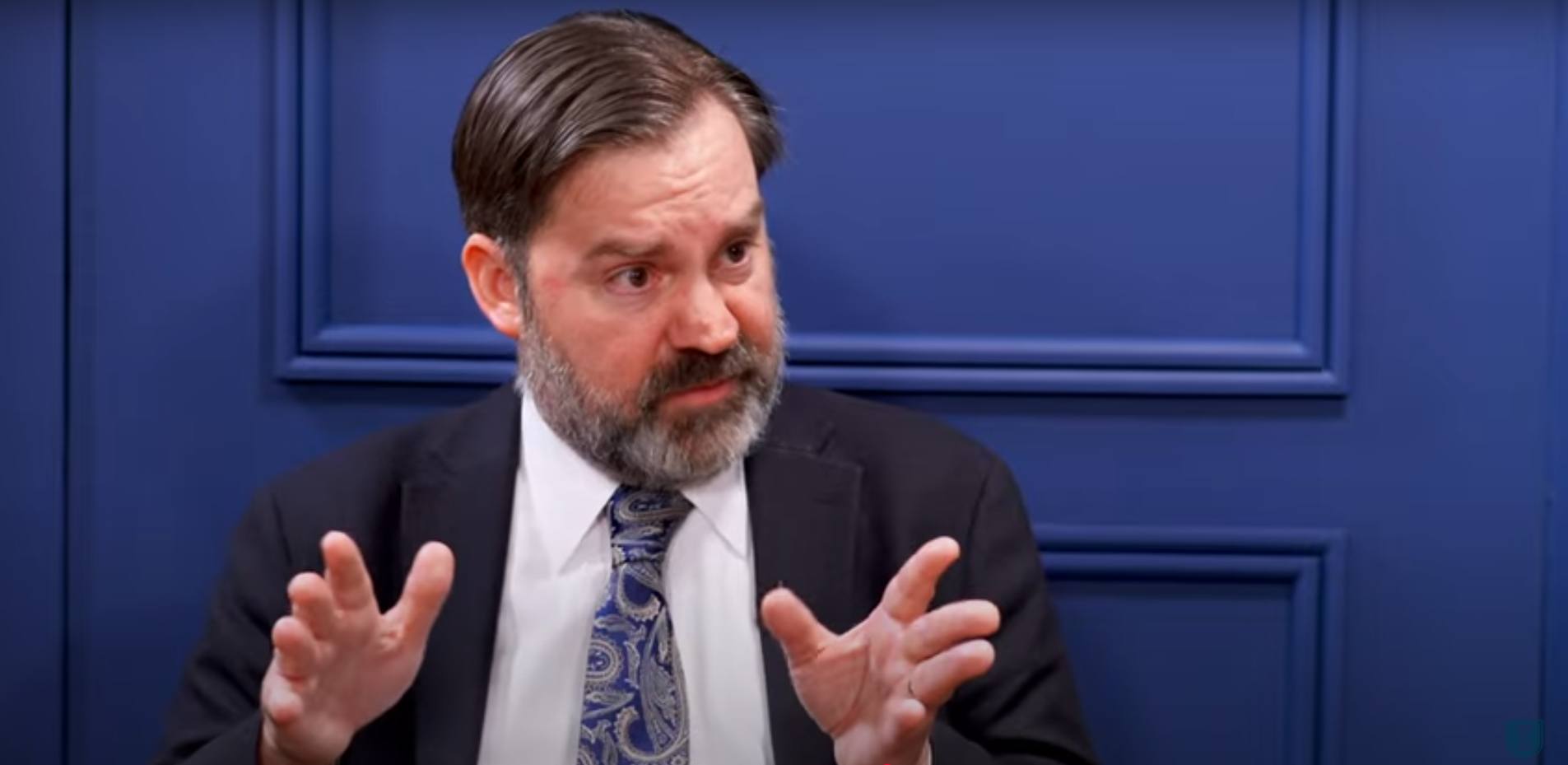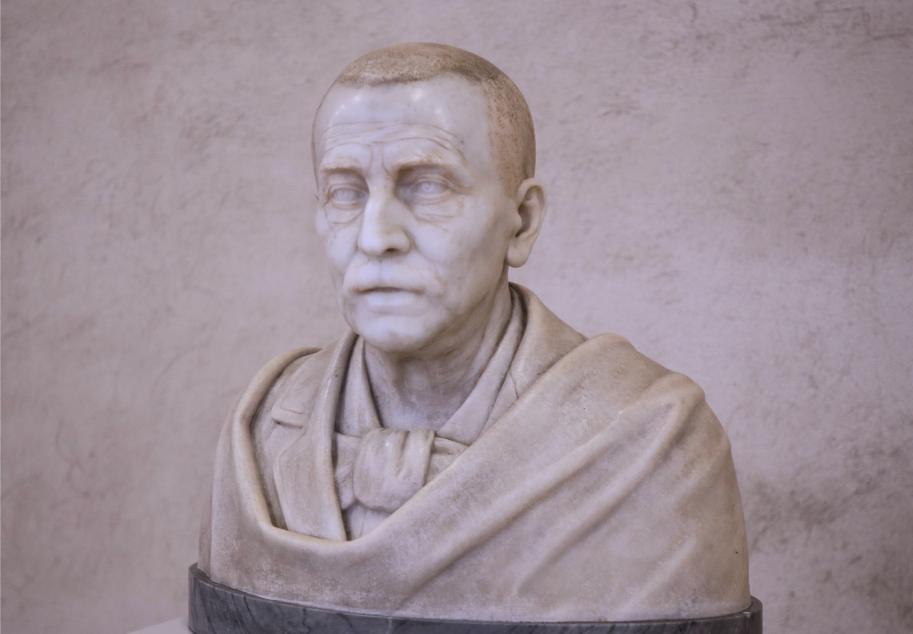Make Spielberg Great Again: The Steven Spielberg Chronicles
By Armond White
(Resistance Works, WDC, 2020)
In 2006, one of the greatest of American filmmakers gave an interview about the greatest of all American filmmakers. Steven Spielberg sat down to talk about John Ford for a new version of Peter Bogdanovich’s documentary Directed by John Ford, originally produced in the late 1960s and then updated for broadcast on Turner Classic Movies. At one point Spielberg spoke appreciatively of Ford’s love of country. “He, to this day, is one of the most patriotic American directors who has ever graced the screen,” Spielberg said earnestly, without a trace of irony, condescension, or censure in his voice.
Patriotism was long intrinsic to Spielberg’s own great films. More plainly than any other cinematic account of World War II, including Ford’s 1945 masterpiece, They Were Expendable, Saving Private Ryan takes as an article of faith the nobility of the Greatest Generation, whose sacrifices helped make possible the postwar boom that Spielberg benefited from and later celebrated. Close Encounters of the Third Kind and E.T. the Extra-Terrestrial ponder the cosmos but have their feet firmly planted in the American suburbs as they existed around the middle of the twentieth century: cocoons of safety in which children ran riot on bicycles, flooded the streets in costumes on Halloween, and welcomed creatures from outer space into their closets.
Spielberg’s linking of American society with material comfort was never more unexpectedly on display than in Empire of the Sun, his exceedingly fine adaptation of J. G. Ballard’s fictional elaboration of his experiences as a British adolescent interned in a Chinese prison camp during World War II. In the almost rapturous penultimate scene, the liberation of Jim—Ballard’s stand-in, played by the young Christian Bale—is marked by Red Cross parcels dropping from the heavens and the sudden presence of a group of soldiers whose green fatigues, M1 helmets, and tough-guy expressions instantly identify them as Americans. At the end of the scene, when Jim hands the senior officer a can of evaporated milk, the old man takes a swig and smiles—a portrait of two key components of the American character: innocence and insouciance.
To a striking degree, Spielberg’s films are linked by his delight in the emblems of Americana. This was a director who appreciated small towns by the sea (Jaws), jitterbug-dancing servicemen (1941), gallant firefighting pilots (Always), and the call of home—a longing given its most memorable expression in the heart-stopping conclusion of his 1985 masterpiece, The Color Purple, showing two African American sisters (played by Whoopi Goldberg and Akosua Busia) brought together after a long separation. Even in the comparatively trivial films of the “Indiana Jones” tetralogy, Spielberg celebrates a benign variety of American exceptionalism, expressed when the hero answers a swordsman with a revolver in Raiders of the Lost Ark and when, in the underrated Indiana Jones and the Kingdom of the Crystal Skull, he summarizes his political preferences this way: “I like Ike.”
And so Spielberg did—until he didn’t. Such is the argument in film critic Armond White’s new book, Make Spielberg Great Again. In gathering five decades’ worth of reviews and essays on the director, White advances a fascinating and finally convincing argument: during his peak years, Spielberg, like the general public, still possessed a patriotism aware of America’s sins but alert to its beauty and necessity—what White defines, in his introduction, as “the common, all-American, ‘suburban’ idealization of family and spirit that is at the heart of even his internationally-set films.”
At some point during the Obama administration, however, Spielberg became seized by antipathy toward the old verities, expressed in the downcast Cold War thriller Bridge of Spies and the Pentagon Papers docudrama The Post. The latter tapped not the early, honorable tradition of newspaper movies, in which journalists were depicted as charming rogues, but its contemporary incarnation, in which members of the Fourth Estate are treated with the sort of solemnity that Catholics might reserve for Sir Thomas More. “His trajectory from the most popular filmmaker in the world to his current marginal status that no longer guarantees a box-office hit—nor popularity—parallels the trajectory of the nation that produced him,” White writes. “Spielberg once excited the imaginations of America’s young cultural consumers, but consumers of the current generation ignore his recent entreaties.”
Since this book consists in large part of reviews and essays on individual films written at the time of a given film’s release, White’s big-picture analysis has the benefit of hindsight and is not always reflected in his initial analyses. There are “golden era” Spielberg films about which White expressed serious reservations at the time. For example, in a Films in Review column, White wrote that Indiana Jones and the Temple of Doom inhabits a “make-believe world of no politics, the world of generic lies and conveniences that most people have been fighting to resist, to expunge from the recesses of their minds, since Watergate and Vietnam when the political and sexual promises and assumptions of popular culture were exposed as impossible and false.”
By 2004, when I conducted an hours-long interview with him, White told me he had reversed course. “I realized the second was not pernicious, as I had assumed,” White said, referring to the position of Temple of Doom as the second of four Indiana Jones films. “In going back to the second, what I saw instead was something that I dare to call the greatest action movie ever filmed. . . . Full of wit, full of humor, and also with a finger on human behavior all the time.” White’s politics have always been invigoratingly idiosyncratic, but perhaps it can be said that the difference between his initial judgment and revised opinion can be accounted for by an increasingly obvious conservative stance, reflected in his film reviews for National Review.
Even so, the general trajectory of Spielberg’s career—from the resplendent optimism of Close Encounters of the Third Kind to the cynical hash of The Post—is reflected in many of White’s original notices. Remarkably, Spielberg began making movies around the same time that White began writing about them, and the two have been in an appreciative, if one-sided, conversation ever since. “For me, each piece reads like a diaristic memory of how I thought at the time that they were written, taking note of Spielberg’s astonishing, developing art and its effect on the world,” White explains in the introduction.
For that reason, of the two pieces included here on Spielberg’s 1974 film The Sugarland Express, the earlier is the more fascinating, because it shows White’s instinctive grasp of a directorial style that was not well recognized among the broader critical community. “The director, Steven Spielberg (who makes a stunning debut with this film), shows an inordinate and exhilarating love for cars; so much love that he sees them as toys—things he can manipulate to show what he knows and feels about modern American life,” White wrote. White’s insight forecast, without realizing it, Spielberg’s rather shameless devotion to the flotsam and jetsam of American life. Witness the way the director dwells on the mashed potatoes Richard Dreyfuss fusses with in Close Encounters or the Reese’s Pieces that are used to coax E.T. to move into the boy’s bedroom.
Spielberg’s “Expectant Joy”
Throughout the book, one has the sense that White and Spielberg are artistic kinsmen of sorts, with the critic locking onto aspects of the director’s work that would be either overlooked or improperly understood by other critics. Reviewing Close Encounters in 1977, White called attention to “one of the most complexly affecting scenes in movie history” in which toys belonging to the boy Barry started moving of their own accord upon the arrival of UFOs. The effect on viewers was the same: “When Barry sees the spaceships coming through the clouds, he says, ‘Toys! Toys! Toys!’ and Spielberg fills the whole movie with that sense of expectant joy.” Decades later, reviewing the Stanley Kubrick–initiated science fiction film A.I. Artificial Intelligence, White confronted the perception that Spielberg’s interest in childhood was “trivial,” arguing that the abundance of scenes depicting broken families coming back together showed that such familial reunions represented “essential longings.”
Although Spielberg would win Best Director Oscars for Schindler’s List and Saving Private Ryan, for years White stood with few other critics or tastemakers in treating his work as consistently worthy of respect. Reviewing The Color Purple, White had the courage to situate Spielberg within a constellation of high and low art, referencing an eclectic range of influences: “Spielberg’s movie recalls a pop tradition so vast it includes D. W. Griffith silents, Lana Turner soap operas, Picasso sculptures, Ntozake Shange plays, rhythm-and-blues and gospel records, Charles Dickens serials, faux-naif Black musicals, liberal-social melodramas and John Ford Westerns.” This laundry list may be a bit much, but it bespeaks White’s astonishing cultural knowledge and his genuine enthusiasm for the film.
In the early 2000s, White was at his best in contending with Spielberg’s rapidly diversifying filmography, which suddenly came to include a caper movie (Catch Me if You Can), an action thriller set in a nightmarish future world (Minority Report), and a meditation on space invaders altogether more menacing than E.T. (War of the Worlds). White plumbs each for riches, arguing that the impersonation of a commercial pilot by the hero of Catch Me if You Can reflected “the tangled essence of American desire” to escape the working class.
Although White admires Spielberg’s first collaboration with playwright-screenwriter Tony Kushner—Munich, a powerful dramatization of the terrorist attack on Israeli athletes at the 1972 Olympic Games and its aftereffects—he dates the director’s decline to his partnership with the playwright. He castigates their subsequent film, Lincoln, as “deviously designed to be a celebration of Barack Obama as a political and cultural icon who is already placed on a pedestal . . . alongside Abraham Lincoln.” Political stridency ill-suits Spielberg, White argues. “After Kushner,” he wrote in 2015, “the lights have dimmed in Spielberg’s worldview, making Bridge of Spies a glum experience.”
In the end, it is among the cultural tragedies of our age that Spielberg forsook the popular touch he once enjoyed for a more fashionable brand of liberal gloom. No major director in history has had the artistic freedom enjoyed by Spielberg. Instead of taking his cue from Tony Kushner, perhaps he should have thought back to John Ford, whose all-embracing humanism and honest celebration of God, family, country were vibrantly revived in films as diverse as The Sugarland Express, E.T., and Saving Private Ryan. Who really believes that the more cynical perspective offered in Bridge of Spies and The Post will outlast those earlier achievements? Yet no matter the ebb and flow of Spielberg’s career, White’s criticism of it remains the very picture of constancy: sympathetic, tough, and true.
Peter Tonguette’s work frequently appears in the Wall Street Journal, National Review, and the Washington Examiner.














